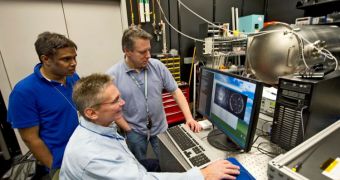When the James Webb Space Telescope (JWST) launches in 2018, it will carry the largest segmented mirror ever developed. Now, scientists are working on miniaturizing the technology, so that it can be used aboard high-altitude balloons, capable of detecting exoplanets from just above Earth's atmosphere.
The primary mirror on the JWST is made up of 18 individual, hexagonal segments, and is around 6.5 meters (21.3 feet) across. The light-collecting area is so large that it will only unfold once the telescope reaches its target orbit.
Now, investigators at the NASA Goddard Space Flight Center (GSFC), in Greenbelt, Maryland, are working on developing a similar, smaller instrument for use within the upper layers of the atmosphere.
They say that the miniaturized mirror segments they are developing can still be used to discover alien worlds orbiting other stars. The segmented mirror currently in the works is just half an inch in diameter.
Dubbed the multiple mirror array (MMA), the instrument is now being assembled at Iris AO, Inc., in Berkeley, California. Funding is ensured through a NASA Small Business Innovative Research grant.
The MMA is a critical component of a hybrid instrument called the Visible Nulling Coronagraph (VNC), which is basically a crossover between a coronagraph and an interferometer. This is the first time such an instrument is being developed.
According to the principal investigator for the VNC, Rick Lyon, all the technologies that will go on the instrument are either complete, or on schedule to being completed within their alloted time frames.
The effort to develop the VNC began more than three years ago, and is led by Lyon, a NASA GSFC expert, and colleague Mark Clampin. Once completed, the instrument will be included in the balloon-borne Big Balloon Exoplanet Nulling Interferometer (BigBENI), to launch around 2016.
BigBENI will work by suppressing the light emitted by its target stars, thus identifying extrasolar planets in their orbit. The goal is to first be able to find Jupiter-sized worlds, and then Earth-sized, rocky exoplanets.
Lyon believes that this instrument could image up to 8 stars in just 5 hours, therefore providing astronomers with a new way to detect and analyze other planets. “Ultimately with this technology, you can get away with a low-cost, low-risk primary mirror,” he concludes.

 14 DAY TRIAL //
14 DAY TRIAL //